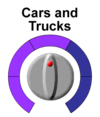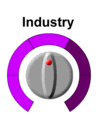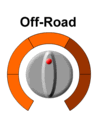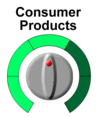Start Here
Next Set These Controls
Cars & Trucks
Passenger vehicles (all sizes), large and medium trucks, and motorcyclesIndustry
Manufacturing facilities, power plants, oil refineries and distribution centers, food and agricultural processingOff-Road
Airplanes, trains, power boats, earth movers, tractors, harvesters, forklifts, bulldozers, backhoesConsumer Products
Hair spray, paints and paint thinner, charcoal lighter fluid, glue or other adhesives, gasoline

Population Control
Population in Smog City, as in the real world, affects emissions, just as changes in any one of the four emissions categories directly changes emissions. In Smog City you can increase the population from zero to double the current population. The current population is based on a city of about one million people.Weather Controls
Daily weather conditions strongly affect ozone levels. Ozone levels are highest in the summer when high temperatures, calm winds, and lots of sunshine prevail. In the real world we can't control the weather, but in Smog City you can experiment with the weather's effect on ozone by adjusting the controls.Maximum Temperature
Heat increases the chemical conversion of emissions to ozone. This control represents the daily maximum temperature and ranges from 80 to 120°F.Inversion Layer
A temperature inversion is a layer of warm air above the ground that traps pollution and ground-level ozone below it. This "lid" prevents ozone from mixing upward. Smog City has three temperature inversion settings: none, low, and high.Wind Speed
Winds blow emissions and ozone around. Calm winds cause emissions levels to increase. Wind speeds range from calm, light breeze (4 mph), breezy (14 mph), to windy (22 mph).Cloud Cover
Sunlight converts emissions of VOCs and NOx into ozone. Cloud cover ranges from sunny to partly cloudy to cloudy.




